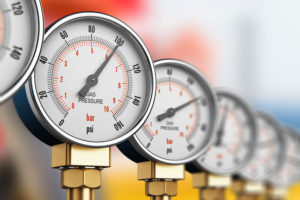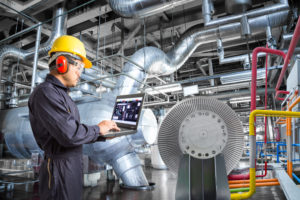We preform Regular Dust-Collector Maintenance to catch potential problems & fix them, preventing the possibility of costly whole-system downtime.
Basic Dust-Collector-System Maintenance can Prevent Process Line Shutdown
We can perform regular maintenance on your dust collector to ensure it is working at peak efficiency. Regular maintenance on your dust collector can often catch problems from worn parts and fix them before the part fails and causes downtime to the whole system.
See Our Dust Collector Maintenance Page
We offer a checklist below of basic maintenance that can prevent system shutdown and downtime to your production line.
Basic Dust Collector Maintenance Checklist
- Monitor Pressure Drops
- Monitor Drum & Hopper Levels
- Inspect Compressed Air Valves & Hoses
- Examine Door Seals
- Inspect Airlock Wipers
- Lubricate Fan Bearings
Monitor Pressure Drops

Pressure Drops across your dust collector is the first and most basic measurement. A high pressure drop across the collector from the clean air output to the contaminated air input indicates that the filters may be creating high resistance to airflow and may need to be cleaned or changed. A pressure differential of 14 psi would indicate a filter requires changing.
Regular Monitoring of Pressure Drops
Regular monitoring of the pressure drop would allow you to anticipate other problems such as holes in the filter or a gasket beginning to leak as indicated by a periodic lowering of the pressure drop.
iCue System Monitoring Service for Continuous Recording of Pressure Drops
Donaldson iCue allows managers to continuously monitor the pressure differential remotely.
Click here for more information about the Donaldson iCue Connected Dust Collector Monitoring Service
Monitor Drum & Hopper Levels
Overfilled or overflowing drums and hoppers can also seriously damage filters or the dust collector itself. Further, collected materials backing up into the dust collector may create a combustible dust hazard.
Drums should be monitored and emptied before they are filled. Dust level monitors can be installed to give warning before overflow occurs.
Regularly Inspect Compressed Air Valves & Hoses
The valves and hoses that control the pulse jet used to clean the filters need to be checked to ensure there is no loss of compressed air resulting in ineffective cleaning of filters, higher pressure drops and more frequent filter changeouts.
Hoses should be inspected for leaks and secure attachments to keep the compressed-air pressures at optimal levels. The valves should be inspected ensuring they are all firing simultaneously, and are fully open when firing, and are fully closed when not firing.
Check Compressed Air Pressure
In addition to checking valves and hoses, the compressed air pressure should be checked to ensure it is within tolerance. Air pressure that is too low will not clean the filters properly, and conversely, air pressure that is too high may damage the filter media.

Examine Door Seals
Dust collector door seals keep the air and dust inside the collector. These gaskets around the edges of the door can become worn, cracked, or brittle preventing the door from sealing properly. Improperly sealed doors can allow air and dust to escape the system and allow the dust within the system to not move through the system properly.
Damaged door seals should be replaced.
Airlock Wiper Inspection
The NFPA often requires airlocks to isolate a fire hazard in the dust collection system. The wipers inside the airlock must be replaced when worn to ensure proper operation. In general, the wipers should be replaced yearly, along with the wiper bearings. In some cases, replacement needs to occur more frequently.
Lubricate Fan Bearings
Regular lubrication of fan bearings should occur on a schedule as outlined in the owner’s manual of your fan or blower. If the fan stops, the air stops and your collector is no longer doing its job, which may lead to a costly production-line shutdown.
Maintenance Schedule
Dust collectors require scheduled maintenance. This can be done in-house by your dedicated maintenance crew or you can contract with us to do regularly scheduled maintenance.
Click here to learn more about maintenance contracts.
